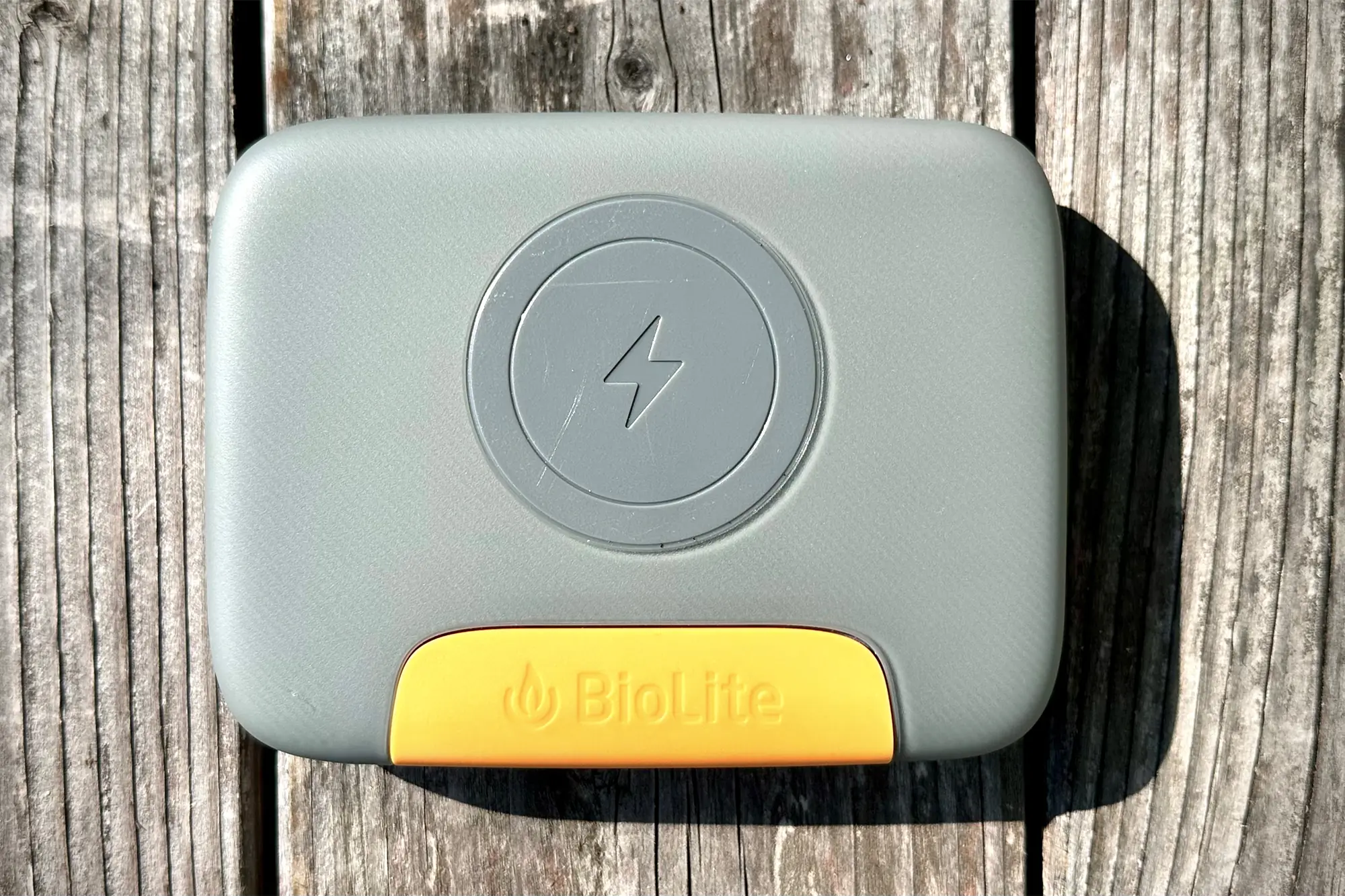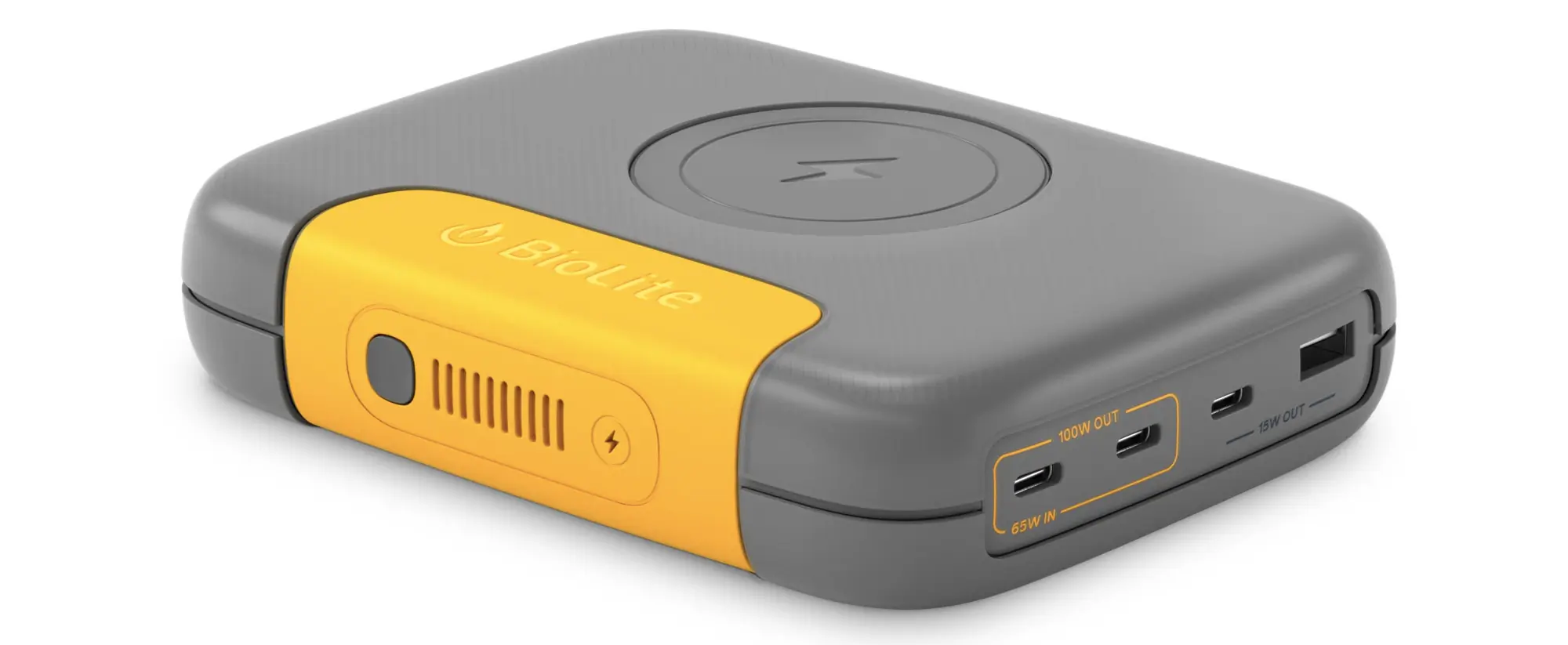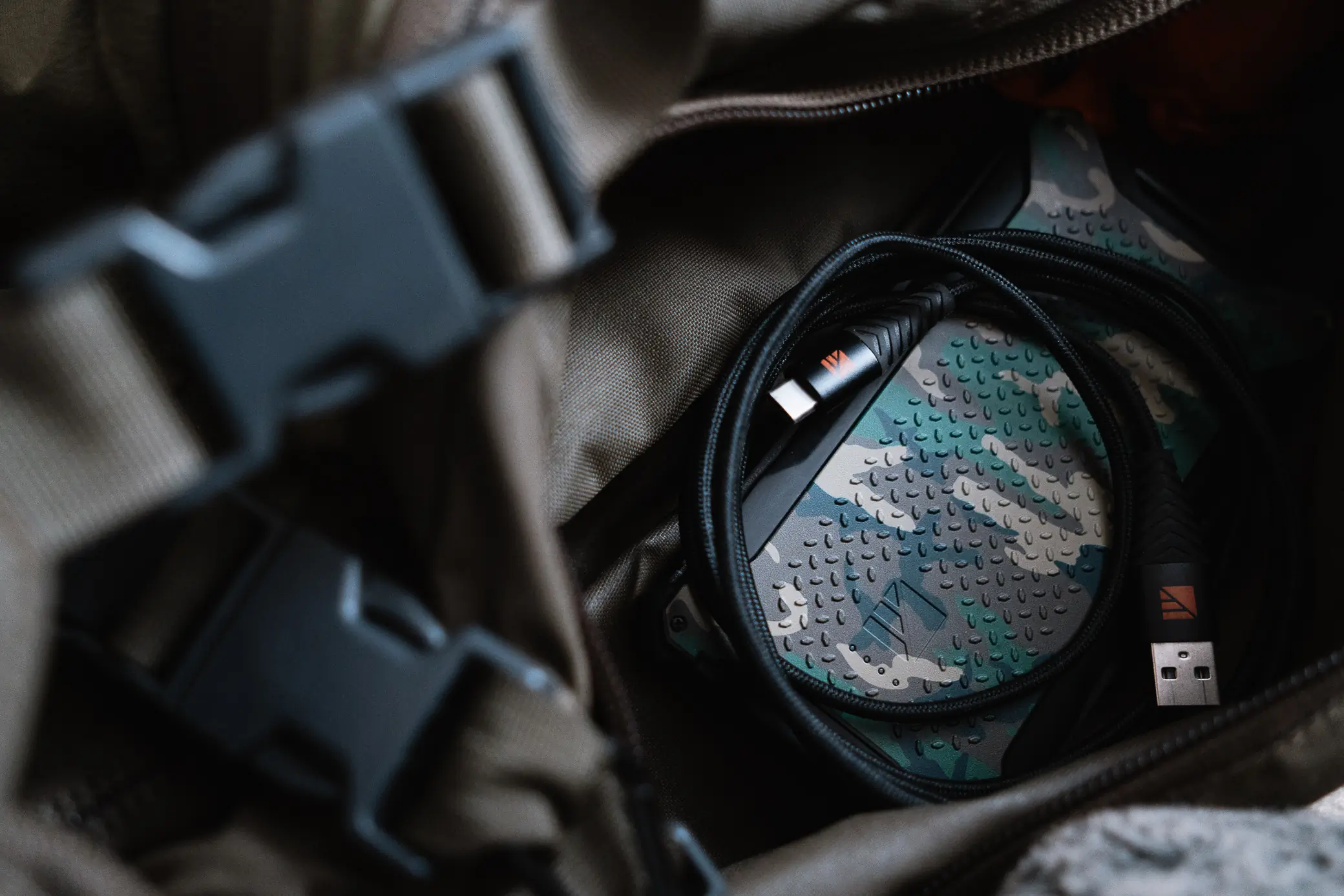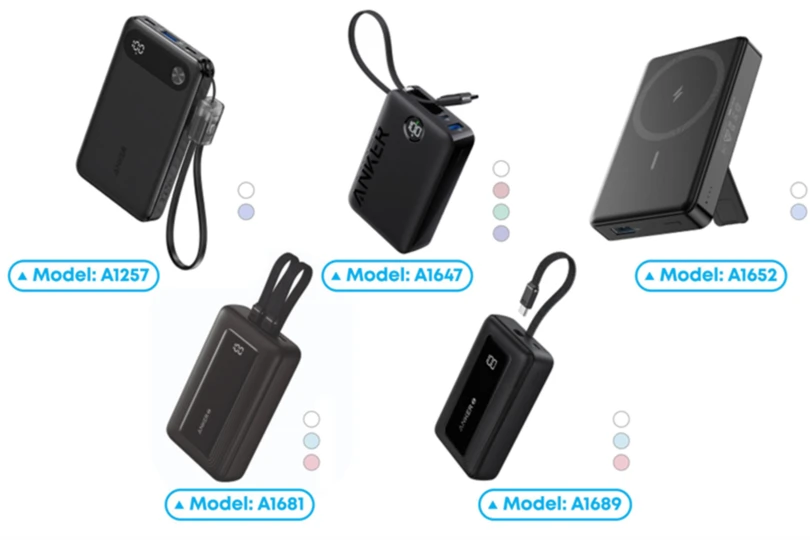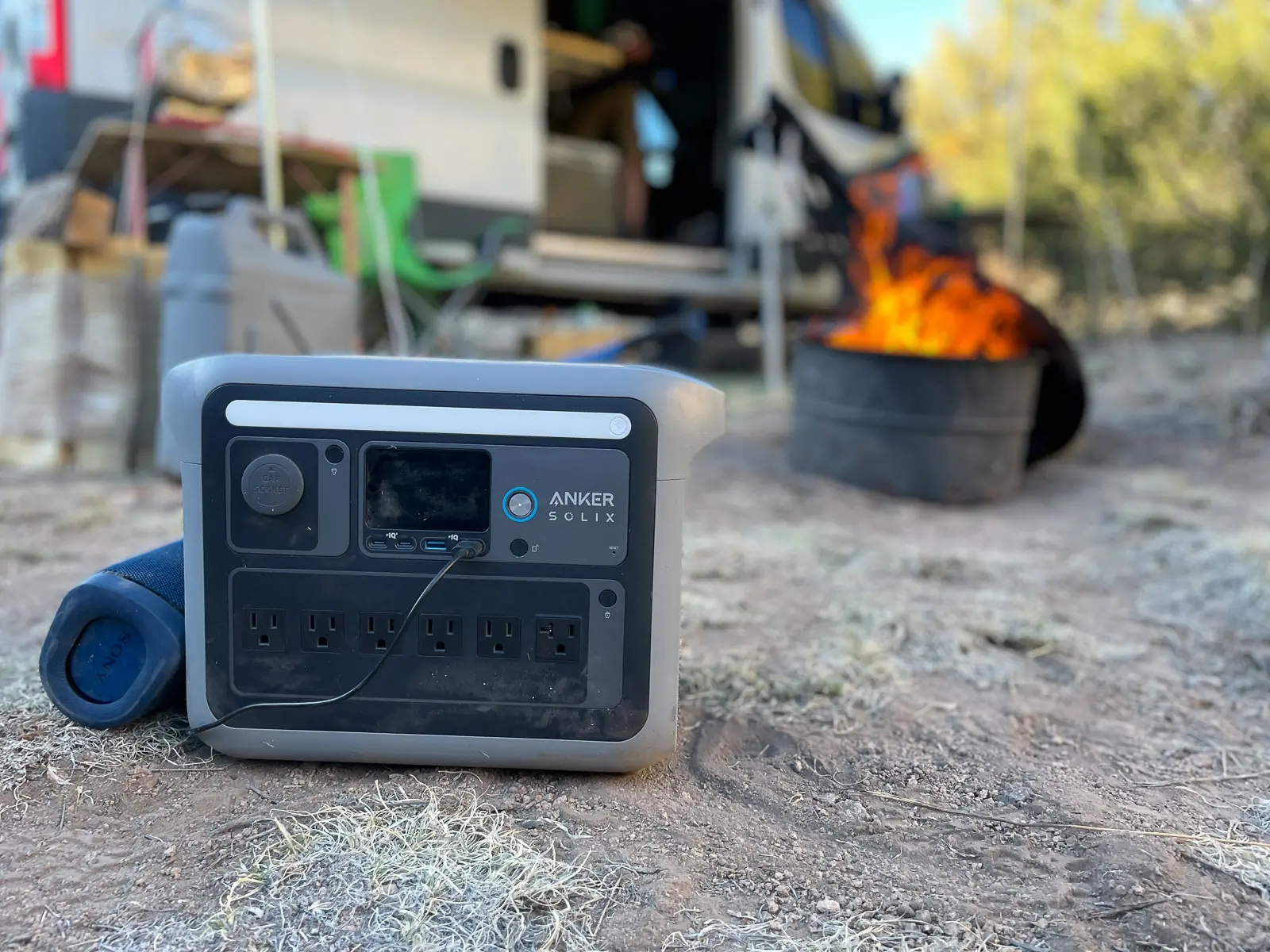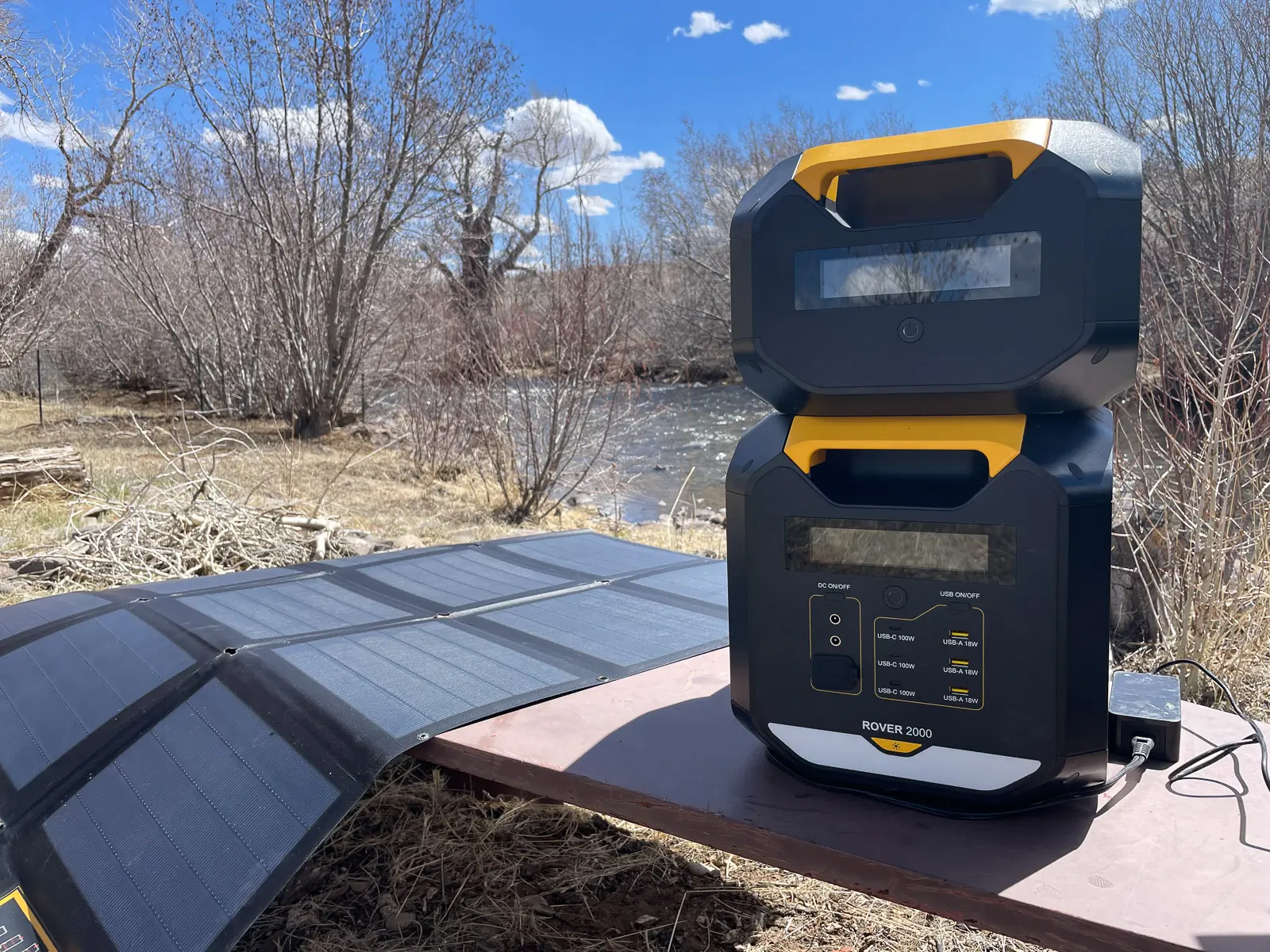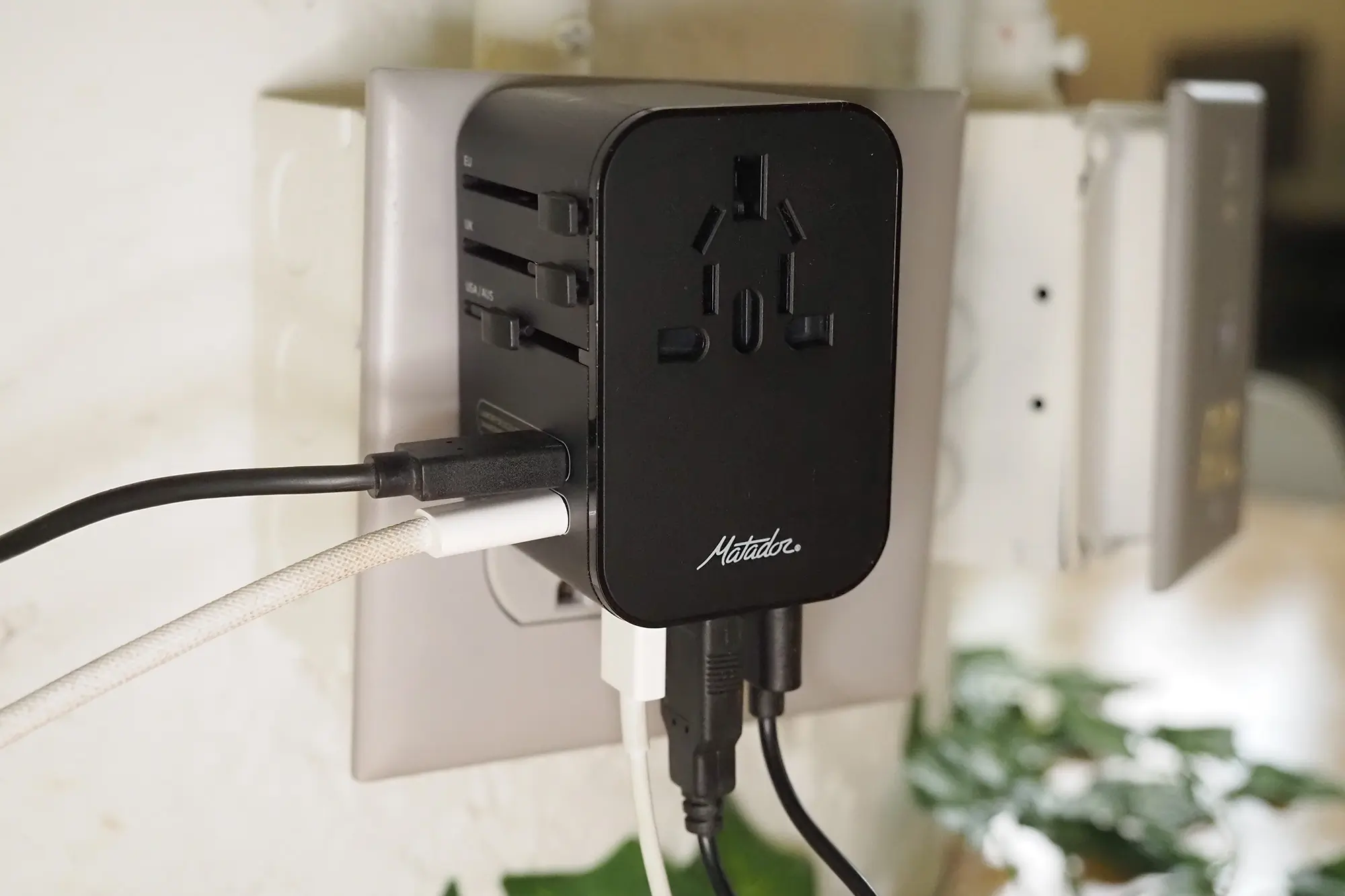Early on, I adopted a blurred background for Zoom meetings — no one needed to know I might be taking that meeting from the parking lot of my favorite local trail. And I don’t see the way I work changing any time soon. If anything, I see myself working more remotely and spending more time on Hipcamp looking up future work and play destinations. Raise your hand if you can relate.
Couple that with the fact that more and more daily necessities have become rechargeable. (I can’t remember the last time I had to change the batteries in even things like my headlamp.) Whereas portable power banks were once a nice addition to your gear kit, looking at how things have shifted, we now rely on them.
That reliance means power banks will continue to need to offer greater output in an increasingly portable package.
For fall 2024, BioLite releases the Charge 100 Max, which it hails as its “biggest and fastest power bank.” The 25,000mAh battery is not only a power upgrade from the Charge 80 PD predecessor, but it also has features like wireless charging and the ability to charge multiple devices at once.
But the big draw is the 100W bidirectional charging feature, which allows for fast charging of devices and a full recharge of the 100 Max’s battery in less than 90 minutes.
In short: BioLite’s Charge 100 Max power bank is finely tuned for your remote working needs but adapts well with travel and the outdoors. With the ability to charge up to five electronic devices at once and fully recharge in less than 90 minutes, the 100 Max may just be the most well-balanced, large-capacity power bank on the market today.
- Capacity: 25,000 mAh
- Weight: 1 lb., 4 oz.
- Size: 5.4" x 4.4" x 1.4"
- Inputs: 65W USB-C PD (1x)
- Outputs: 100W USB-C PD (2x), 15W USB-C (1x), 15W USB-A (1x)
- Wireless: Yes, 15W – MagSafe compatible
- Price: $150
Pros
- Great balance between size and capacity with the added benefit of efficiency
- Can charge up to 5 devices at once
- Wireless charging
- Bi-directional charging for optimized charging and recharging
- Rugged construction with 1m drop rating
Cons
- Too much power and capability for simple charging needs
- Not waterproof/IP rated
BioLite Charge 100 Max Power Bank Review
What Does ‘PD’ Mean?

Saving you from all of the technical jargon out there, PD stands for “Power Delivery.” Where USB-C is faster at charging electronics than USB-A, USB-C PD is even faster than that. But it requires special hardware.
The Charge 100 Max comes with a USB-C PD to USB-C PD cable rated up to 100W. This cable can charge the power bank from empty to full in less than 90 minutes.
In short, the cables matter. Your standard USB-C cable is rated for 15 W. With the cable included with the 100 Max being rated for 100 W — that’s 6.66 times faster.
Design and Features
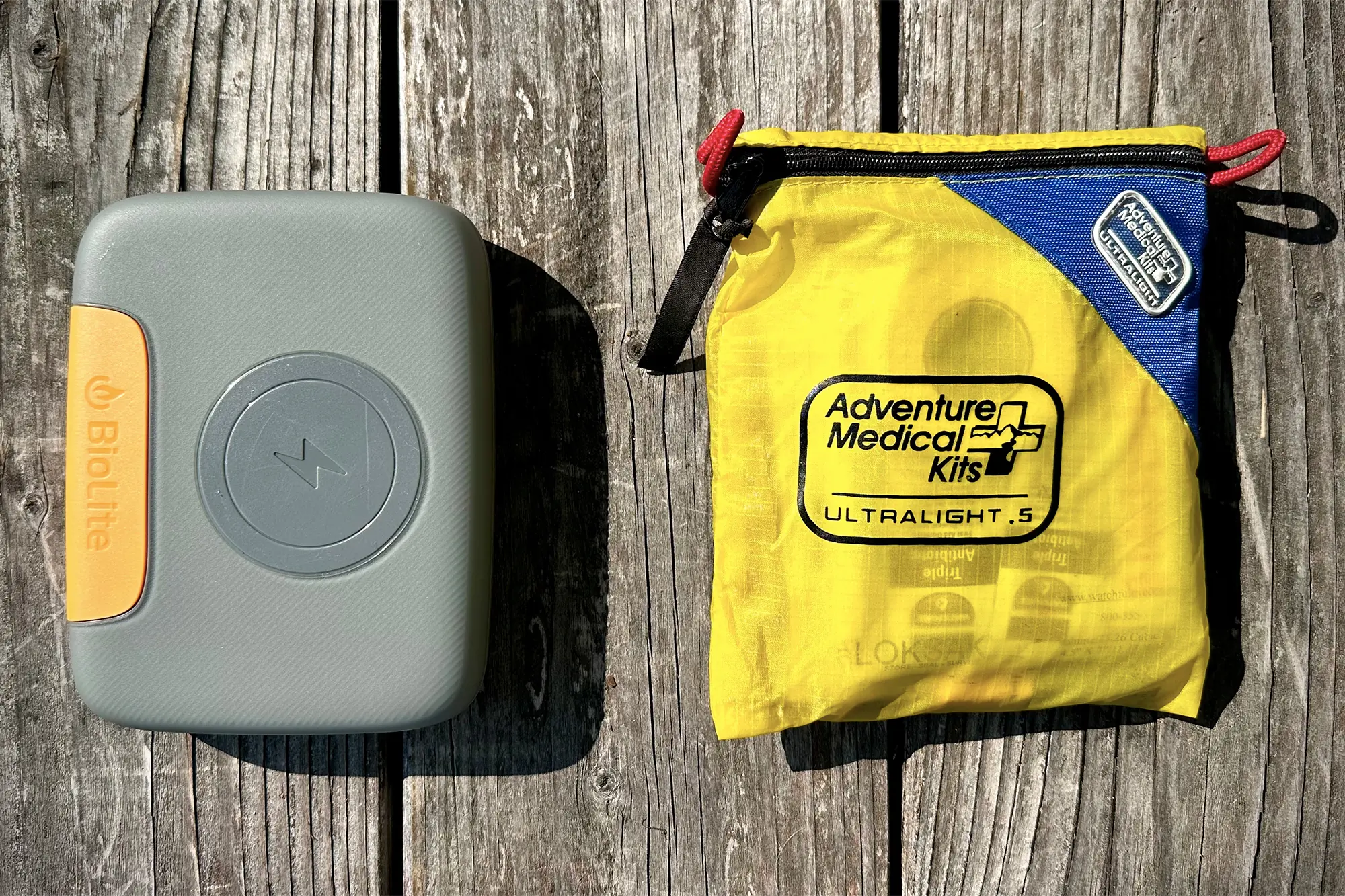



BioLite’s Charge 100 Max is a full-size, full-featured power bank designed for both work and play. Smaller and lighter than most of the other 25,000mAh 100W power banks on the market, the 100 Max carries the ability to charge up to five electronic devices (up to 120 W) at once. This makes the 100 Max a great choice for powering your remote workspace, or the singular solution for charging all of your electronics efficiently at your campsite.
Though this power bank is not waterproof, it is constructed from a durable, rubberized case that has been drop-tested and approved at 1 m (3.3 feet). Referring to an FAQ on the BioLite site, the brand says it didn’t see the need to waterproof the power bank because “most users are not charging sensitive electronics in rainy or wet conditions.”
I can’t argue with that logic, but as spoiled as I am by products that are IP-rated for outdoor use and abuse, I wouldn’t mind that extra layer of protection.
Aside from the addition of wireless charging, one other appealing feature of the 100 Max is its 100W bidirectional charging capabilities. The two left-most USB-C PD ports are capable of being an input or an output — and you can switch between the two by pressing the singular gray button on the unit twice. This allows for faster charging of your electronics as well as faster recharging of the powerbank.
Solar Charging
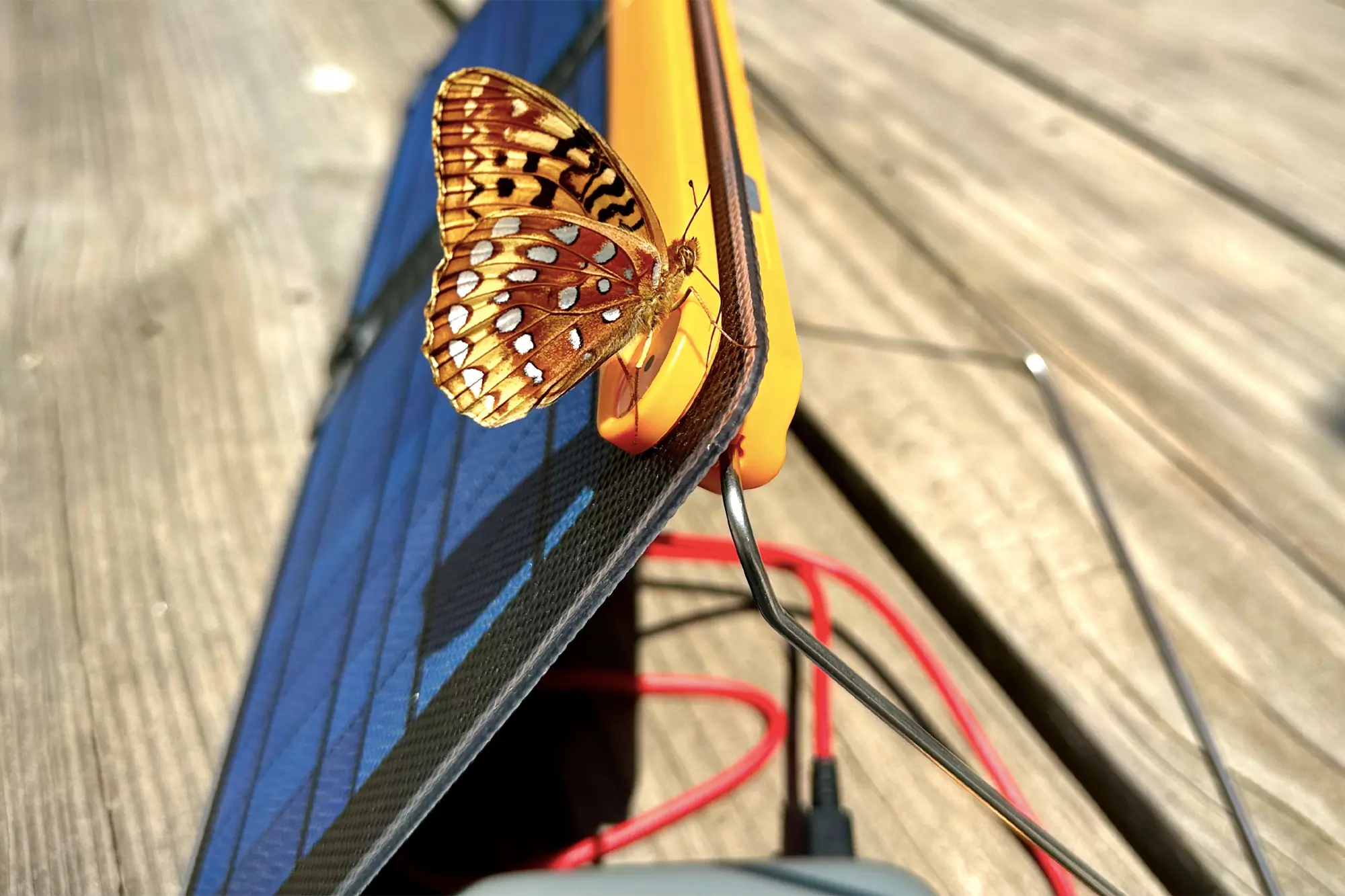



The reality of recharging power banks of this size with a solar panel is that it’s not going to be quick unless you have a solar panel that can soak up some serious solar power.
Unfortunately, in the world of solar panels, intake equates to size. I tested the Charge 100 Max with BioLite’s SolarPanel 10+ foldable 10W solar panel and barely moved the needle in the course of 2 hours. At 10 x 8 x 1 inches, it’s the ideal size for, say, a backpack.
What the 100 Max would need is something like BioLite’s SolarPanel 100 100W folding solar panel. However, at 20 x 14 x 1.5 inches (and 10 pounds), that panel won’t fit inside of the opening of your standard top-loader.
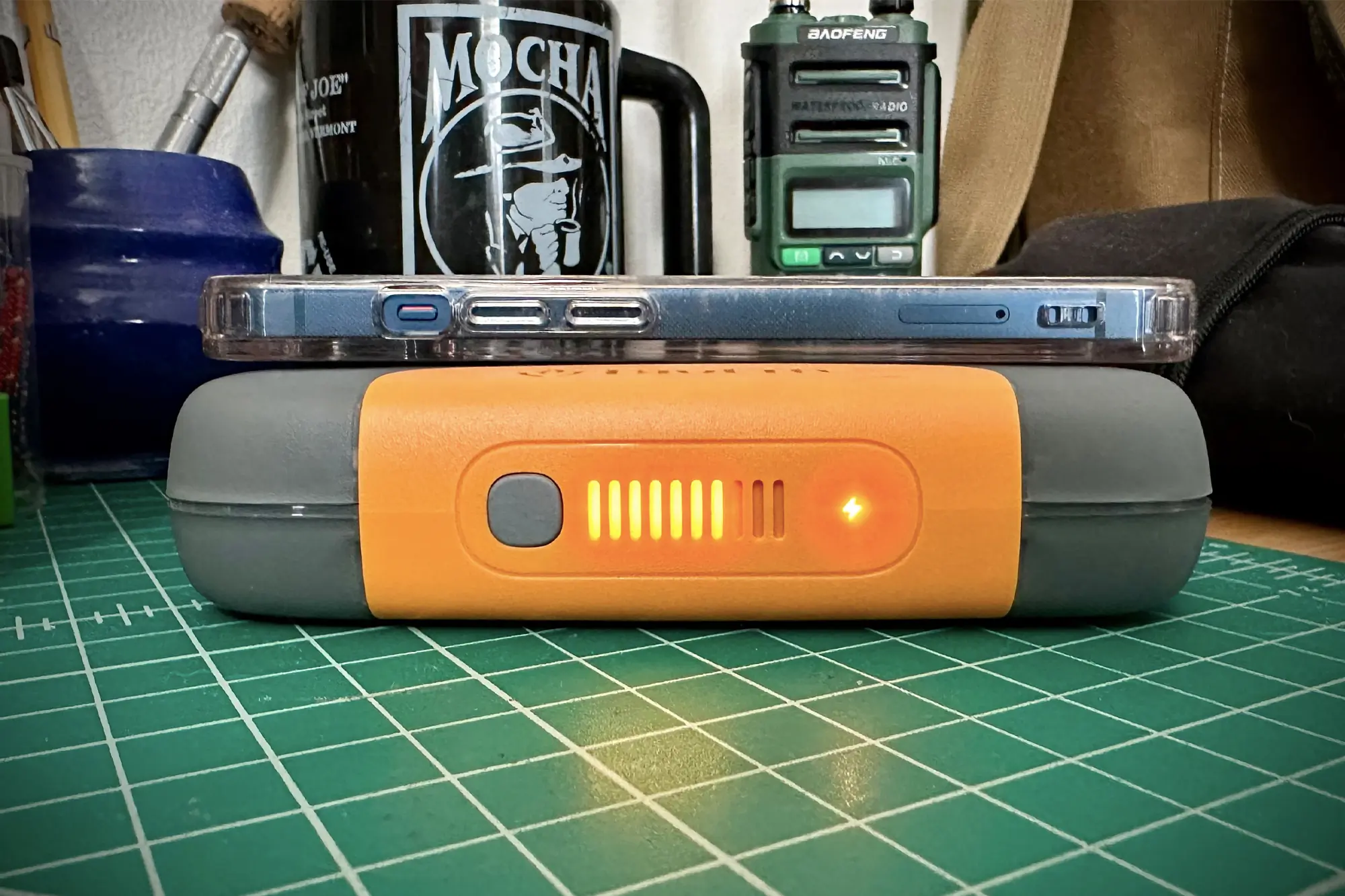



This won’t be an issue if you’re stationary or car camping, but for lighter objectives, solar charging won’t provide the ideal solution for a power bank of this size.
That said, you might not need to rely on solar to recharge the 100 Max. If you’re in a situation where you need to recharge this power bank often, you’re probably carrying around too much to be backpacking with it.
Considering that factor, if you’re relying on the 100 Max to recharge your cellphone, tablet, or camera, you’ll be both surprised and pleased at how many charges you can get before it requires a recharge.
Leave the backpack-friendly solar panel behind. You can recharge the 100 Max from a larger power station, your vehicle, or a wall outlet.
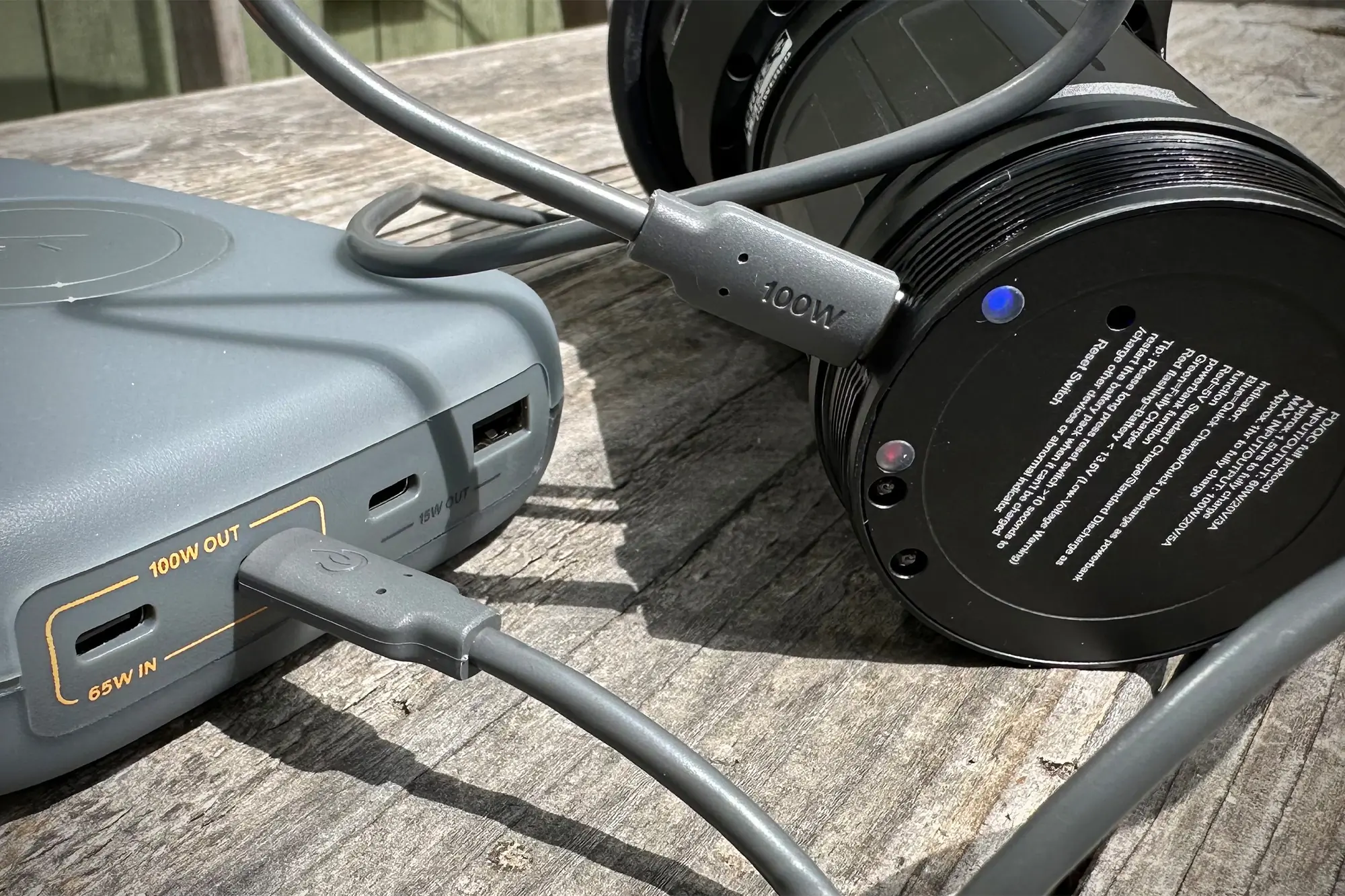



Wall Charging
Unfortunately, all the old charger blocks that came with your smartphones that are gathering dust in a drawer won’t cut it if you want to benefit from the high-capacity input and bidirectional charging feature. Any standard wall outlet will provide that amount of juice, but you need to have the right interface between outlet and powerbank to reach that level.
I use the Anker 736 Charger at home and on the road when I know that there will be wall outlets available to me. It’s smaller than the standard MacBook wall charger and features Anker’s IQ technology. IQ’s circuitry allows the charging block to adjust the amount of power it supplies based on the demands of what’s plugged into it.
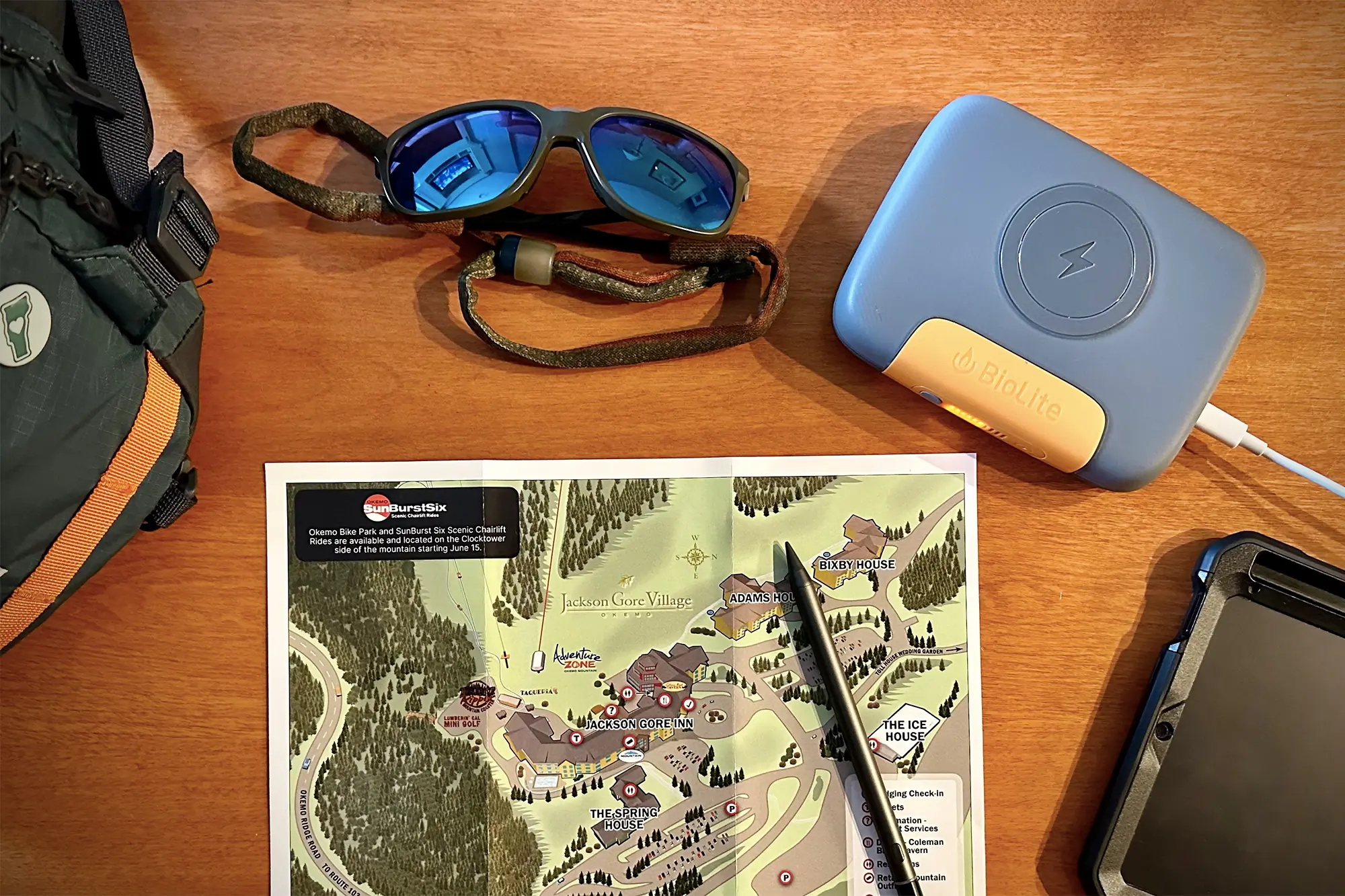



In the Field
BioLite sent me a Charge 100 Max unit back in May with the promise that I would test the heck out of it and not tell anyone about its existence. From May 18 until May 31, it charged three different iPhones and an iPad a total of 10 times before it needed a recharge.
It lived in the backseat of my 4Runner, was held captive by my children, spent a long weekend in a stellar mountain suite at Okemo Mountain Resort, and was stuffed in my backpack for numerous hikes and camping trips. It also became a staple in my home office.
I’m at a phase in life where I’m starting to consider the benefits of ultralight, minimalist camping. I don’t think I’ll ever abandon my heavy-denier roots, but I’m more conscious of the weight of the things I carry. I even got my summer pack weight for 2 to 3 nights of camping down to 18 pounds.
As a reward, I threw the 100 Max into the pack knowing it was more than I would ever need. I think most people could get away with a 10,000mAh-15,000mAh power bank, but I like peace of mind. With a phone, headlamp, and flashlight all functioning off of a rechargeable battery, it’s nice to have wiggle room.
But I also know this power bank is destined to become my basecamp and remote-work power bank. For my most basic needs, I will have nearly a week of iPhone charges without having to recharge the 100 Max.
And on the other end of the spectrum, it can power my MacBook Pro for more than a week off a single charge. Macs are notorious for gulping battery life and I haven’t run into a jam relying on the 100 Max to keep it running.
BioLite 100 Max: Should You Buy?
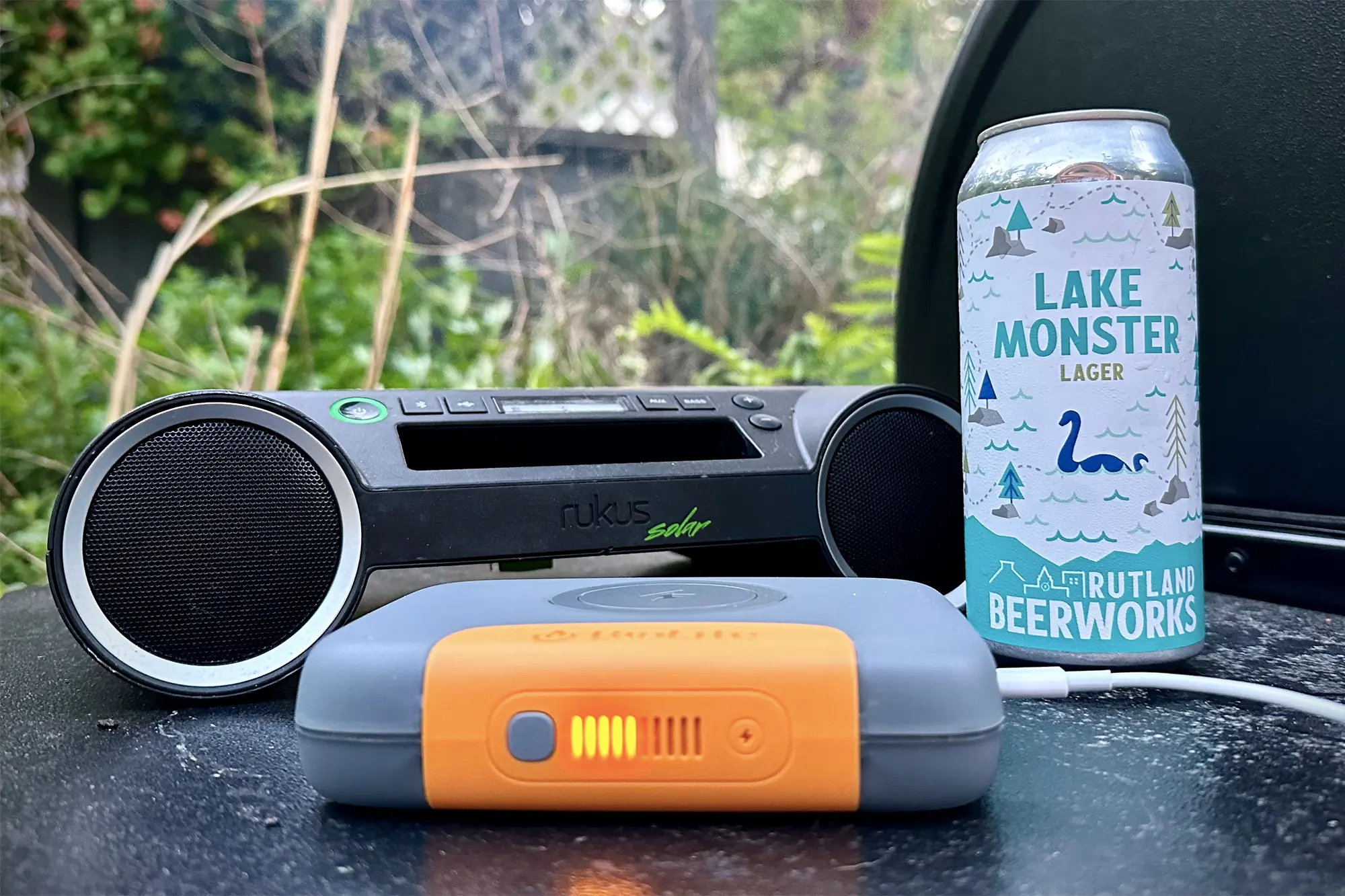



While the Charge 100 Max might be overkill for someone just looking to recharge their phone on the trail, it offers a one-stop solution for someone looking to charge multiple different electronics efficiently. I am in the process of testing a handful of power banks for the next update to GearJunkie’s Best Power Banks guide. I know that when I just want to recharge my iPhone or iPad, there are other banks I will reach for first.
However, for working remotely or traveling in general, the Charge 100 Max is what ends up in my pack.
Is it heavy? Not really, nor is it bulky. When you consider that the 100 Max is geared toward charging multiple electronic devices at once, multiple times, 1 pound, 4 ounces looks great.
Considering what’s available for other high-functioning 25,000mAh power banks — Goal Zero Sherpa ($250) and Anker PowerCore II Elite ($130) being the two most comparable — it’s the only mainstream power bank that can charge as many electronics as it can at once and recharge as quickly.
In the world of portable power banks, the balance between capacity, size, and efficiency are major factors. The BioLite Charge 100 Max checks off those boxes and then some.
